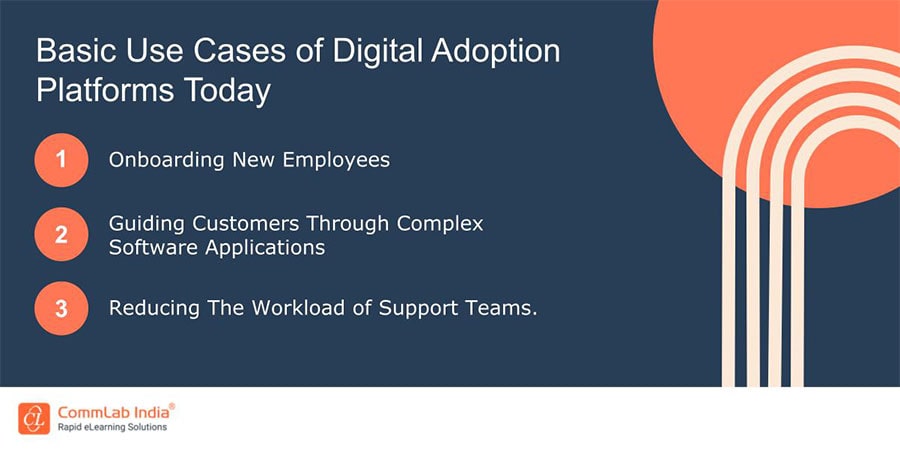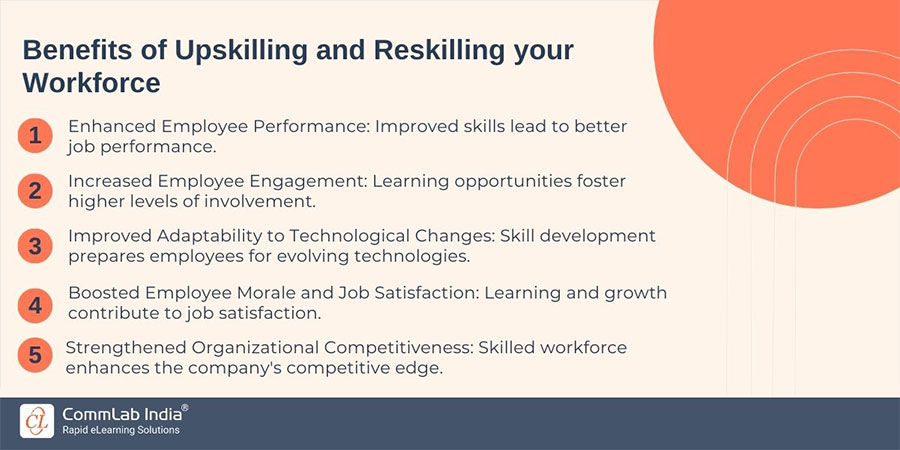How to Build a Fool-Proof L&D Strategy? [Lessons Learnt from the Past]
![How to Build a Fool-Proof L&D Strategy? [Lessons Learnt from the Past] How to Build a Fool-Proof L&D Strategy? [Lessons Learnt from the Past]](https://blog.commlabindia.com/hubfs/blogs/robust-ld-strategy-lessons-past-corporate-training.jpg)
The world of Learning and Development (L&D) is constantly evolving, mirroring the rapid transformations of the workplace. Just like historical empires rose and fell based on their ability to adapt, L&D strategies need to be fool-proof to ensure employee success.
Looking to future-proof your L&D strategy?
Learn from the L&D industry's own history:
- Ditch lengthy training for engaging microlearning & gamification.
- Focus on upskilling with future-proof skills like AI & automation.
- Foster collaboration with knowledge-sharing platforms.
- Leverage technology like LMS & personalized learning paths.
(Read on for more...)
Let's explore key lessons from the L&D industry itself:
How to Build a Future-Proof L&D Strategy?
Lesson 1: The Fall of Traditional Training Methods: The Rise of Microlearning and Gamification
Just as the Roman Empire's rigid phalanx formations couldn't compete with agile barbarian forces, traditional one-size-fits-all training methods struggle to engage today's dynamic workforce. Microlearning offers bite-sized, easily digestible knowledge chunks readily absorbed in busy schedules. Gamification injects a dose of fun and competition, boosting engagement and knowledge retention.
L&D Application: Develop a blended learning approach that incorporates microlearning modules, interactive elements, and gamification strategies. Ditch lengthy lectures and embrace on-demand, accessible learning experiences.

Lesson 2: The Industrial Revolution and the Need for Upskilling
The Industrial Revolution highlighted the need for continuous learning and upskilling. Similarly, the L&D industry has seen a shift from basic skills training to ongoing skill development programs that keep employees adaptable in an ever-changing job market.
L&D Application: Invest in L&D programs focused on future-proof skillsets. Incorporate emerging technologies like AI and automation into training curriculums. Encourage a culture of lifelong learning through readily available resources and upskilling opportunities.

Lesson 3: The Renaissance and the Power of Collaboration
The Renaissance thrived on curiosity, exploration, and collaboration. The L&D industry is mirroring this with a growing emphasis on collaborative learning. Platforms that facilitate knowledge sharing, peer-to-peer learning, and mentorship programs foster a dynamic learning environment.
L&D Application: Implement collaborative learning platforms within your organization. Encourage knowledge sharing initiatives, mentorship programs, and team-based learning projects.
→ Download Now: How L&D And Business Can Align to Conquer the Future of Work [eBook]
Lesson 4: Silicon Valley's Agility and Continuous Learning
Silicon Valley's success hinges on continuous learning, adaptation, and embracing new technologies. Similarly, the L&D industry needs to be agile and adaptable. Learning Management Systems (LMS) and Learning Experience Platforms (LXPs) allow for rapid content updates and personalized learning paths.
L&D Application: Utilize Learning Technologies that cater to individual learning styles and preferences. Invest in adaptive learning platforms that adjust content difficulty based on learner performance.
Lesson 5: The Great Recession and the Value of Lifelong Learning
The Great Recession highlighted the importance of lifelong learning for employability. The L&D industry is responding with a focus on programs that develop a diverse skillset. Employees equipped with a broader range of skills are better positioned to navigate economic fluctuations and career changes.
L&D Application: Go beyond job-specific training and offer lifelong learning programs that cater to diverse skill development. Encourage cross-training and provide opportunities for employees to pursue additional qualifications relevant to their field.
Lesson 6: The Rise of eLearning and Remote Learning
The COVID-19 pandemic forced a rapid shift to remote work, highlighting the critical need for effective remote learning solutions. The L&D industry responded with a surge in eLearning platforms offering engaging and interactive learning experiences accessible from anywhere.
L&D Application: Invest in robust eLearning platforms with diverse content formats – video lectures, simulations, interactive quizzes – to cater to different learning styles. Prioritize mobile-friendly learning experiences to accommodate remote workforces.
Lesson 7: The Power of Data-Driven Learning
Traditionally, L&D programs lacked robust measurement and feedback mechanisms. However, the industry is increasingly embracing data-driven learning. Learning Management Systems (LMS) track learner progress, identify knowledge gaps, and inform continuous improvement of L&D programs.
L&D Application: Utilize Learning Management Systems to track learner progress and completion rates. Gather feedback through surveys and assessments to identify areas for improvement. Leverage data insights to personalize learning journeys and ensure program effectiveness.
What is Learning Analytics and How Can It Help You? [Video]
Building a Future-Proof L&D Strategy: Key Considerations
By drawing upon these valuable insights from within the L&D industry, organizations can develop future-proof strategies:
- Focus on Learner Needs: Understand how your workforce learns best and personalize L&D programs accordingly.
- Embrace Technology: Leverage technology to create engaging and interactive learning experiences. Explore the potential of virtual reality (VR) and augmented reality (AR) for immersive learning simulations.
- Data-Driven Decisions: Regularly evaluate L&D program effectiveness and adapt based on data and feedback.
- Focus on Transfer of Learning: Ensure learning translates into practical skills applicable to real-world work scenarios.
Conclusion: The Power of a Future-Proof L&D Strategy
In today's dynamic world, a future-proof L&D strategy is critical for organizational success. By learning from the past and embracing continuous learning, L&D professionals can empower their workforce to thrive in the ever-changing workplace. Invest in your L&D strategy today and unlock the limitless potential of your workforce!
Is Your L&D Strategy Aligned for the Future? Download This Free Resource and Find Out!



![Top 3 Instructional Design Strategies That Pair Perfectly with Rapid eLearning [SlideShare]](https://blog.commlabindia.com/hubfs/Imported_Blog_Media/instructional-design-strategies-rapid-elearning-slideshare.png)
![Insider’s Guide for L&D Pros to Building a High-Performing Hybrid Employee Learning Strategy [eBook]](https://blog.commlabindia.com/hubfs/Imported_Blog_Media/LD-professionals-Heres-a-Guide-to-Build-High-Performing-Hybrid-Employee-Learning-Strategy-eBook-min-1.png)
